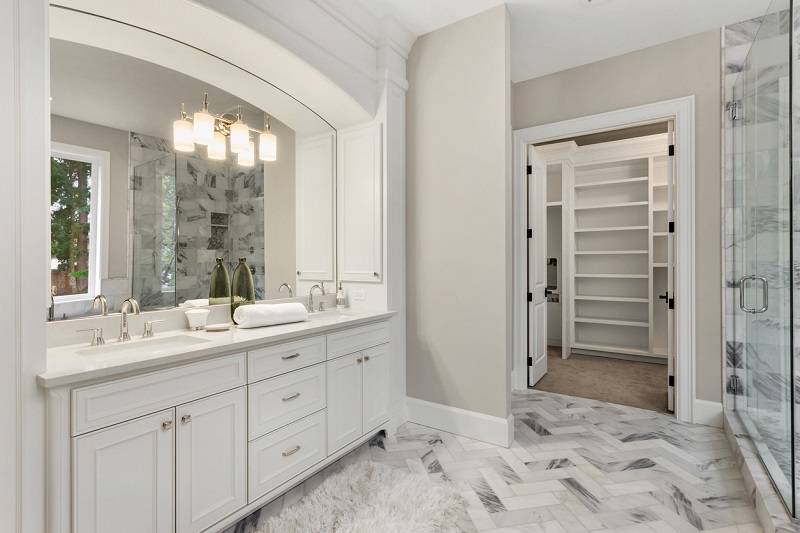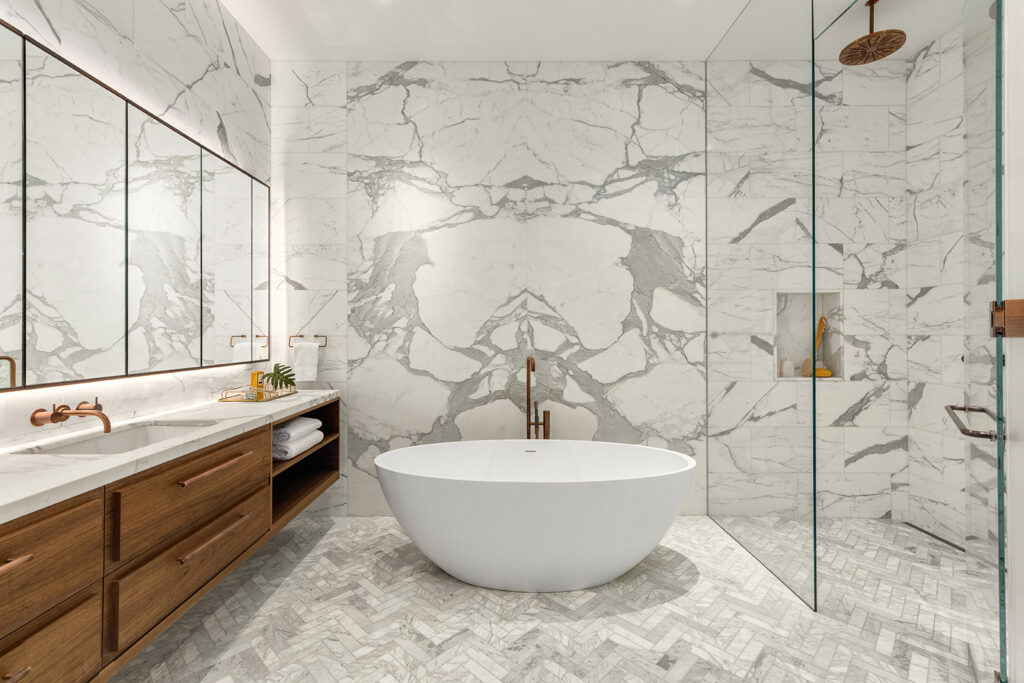
One-Piece vs Two Piece Toilet – Pros and Cons- 2025 Expert Guide
When upgrading your bathroom, one of the most important—and often overlooked—decisions is choosing between a one-piece or two-piece toilet. While
Looking to add a bathroom to an existing room? Ensuite bathrooms are just that-a bathroom that is connected to another room. But before you decide to install one, are there any negatives to consider? How much space will you require? And most importantly, how much will it cost? Today, we hope to answer all of these questions to see if an ensuite bathroom is the right fit for your home.
An ensuite bathroom is an en suite or attached bathroom, usually connected to a bedroom. The characteristics of an ensuite bathroom that make it unique is that this bathroom must be connected to another bedroom, typically the master bedroom, to be considered an ensuite bathroom.

The term en suite was originally French, meaning “afterwards” or “following”. This term was later adapted in English to mean “in room” or “connected”. The english term directly relates to an ensuite bathroom as it is a bathroom that is in the same room as another bedroom or connected to another room.
There are a few advantages ensuite bathrooms offer your home, and a few drawbacks as well. Here are some common benefits and negatives:
Ensuite bathrooms provide a few advantages, namely convenience and personal privacy.
Extra privacy does come at a cost however, as ensuite bathrooms are harder to resell and require a large amount of space.
On average, installing a new ensuite bathroom will run anywhere between $15-30,000. Of course you can reduce this cost by lowering the cost of materials and making the space smaller, but this price point accounts for the extra labor and material costs of adding a new bathroom to an existing space. On average, installing a bathroom to an existing space will generally be 40-60% cheaper than adding a new bathroom.

However, before you install an ensuite bathroom, consider the available space you have and take into account the cost of installing over an area as an ensuite bathroom can drastically limit the available space in your home.
Ensuite bathrooms are available in a multitude of sizes. These sizes allow you to be flexible in your bathroom installation, ensuring that you still have a reasonable amount of space afterwards.
A large ensuite bathroom starts anywhere between 40-100 square feet. From there, a large ensuite bathroom can go upwards of 100-200 square feet and beyond with no limit. The biggest limitation to an ensuite bathroom would be the adjoining room that connects it, as an ensuite bathroom must be connected to another room to be considered an ensuite bath. But reasonably, you can build an ensuite bath as large as the adjoining room if you so desire.
A medium ensuite bathroom is around 35-40 square feet. 40 square feet is the average size of a full bath, ensuring that you have space for a shower, bathtub, sink and toilet. While you can have smaller ensuite bathrooms, this will lower your bathroom to a ¾ or half bath respectively.
The smallest a bathroom can be is around 15 square feet. 15 square feet affords you space enough for a sink and a toilet. For shower installation, you will need at least 30-36 square feet. Since an ensuite bathroom is connected to a singular room, a small ensuite bathroom is recommended as it is for personal use and 30-36 square feet allows you to utilize the space for something else in your house afterwards.
Ensuite bathrooms can provide your home with additional privacy and easy access for the elderly and movement impaired. There are a few drawbacks, namely the resale price and the space it requires but beyond that, they can make great additions to any household so long as you plan accordingly.

Eric is the founder and president of Badeloft USA. He has been the president of Badeloft’s US division for over ten years and oversees all marketing and branding aspects of Badeloftusa.com.
His expertise lies in small business development, sales, and home and bathroom industry trends and information.
Contact us with any business related inquiries.

Free material samples and tub templates

When upgrading your bathroom, one of the most important—and often overlooked—decisions is choosing between a one-piece or two-piece toilet. While

Small details, including what you place on the floor, can make a big difference when setting up or upgrading your

Plumbing traps may seem like small components, but they are critical in keeping your home safe and odor-free. Two of
When shopping for new bath linens, the difference between a bath towel and a bath sheet can feel subtle, but
Fill out the form below to request a free material sample
"*" indicates required fields
"*" indicates required fields
"*" indicates required fields